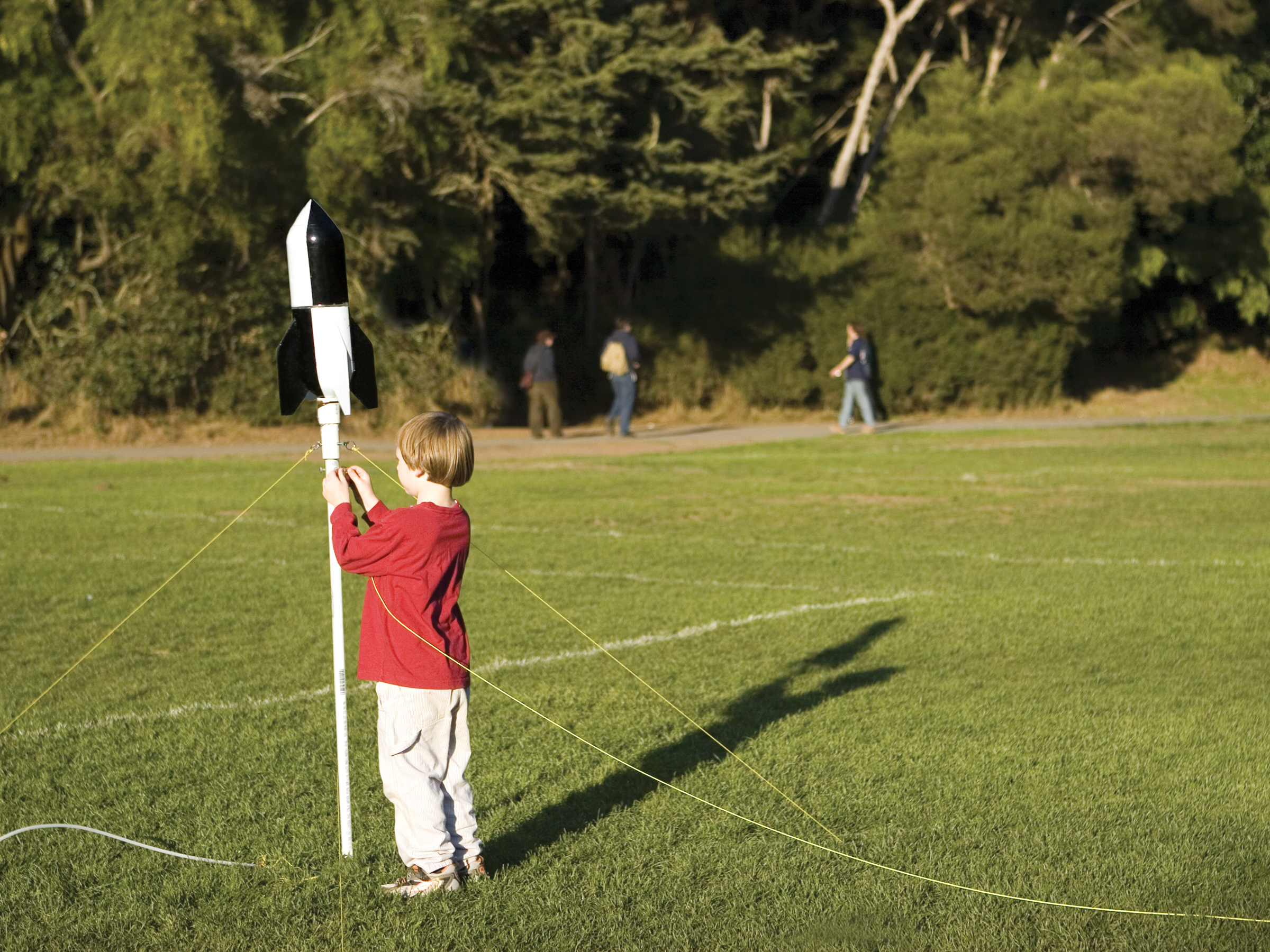I’ve been a big fan of model rocketry since I built my first Estes Alpha back in third grade. Nothing is more exciting to a 9 year-old proto-geek than launching a homemade rocket. But flying those one-shot solid-fuel rockets can burn a hole through a young hobbyist’s wallet faster than they burn through the atmosphere, and with today’s larger, high-powered rockets, locating and traveling to a safe and suitable launch site can require substantial planning and effort.
Instead, you can use 2-liter carbonated drink bottles to build an inexpensive, reusable water rocket. The thrill factor is surprisingly high, and you can fly them all day long for the cost of a little air and water. It’s the perfect thing for those times when you just want to head down to the local soccer field and shoot off some rockets!
Watch Steve and his 4-year-old son, Ivan, launching their soda-bottle rocket.


